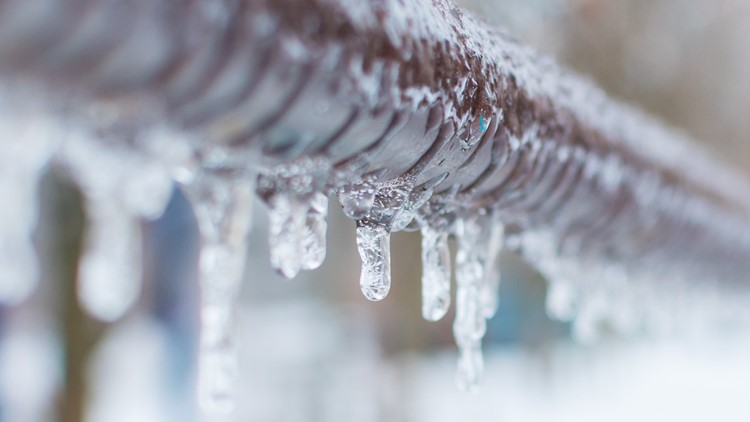Guidance for Avoiding Frozen Plumbing in Winter: Expert Tips
Guidance for Avoiding Frozen Plumbing in Winter: Expert Tips
Blog Article
This great article listed below pertaining to 6 Ways to Prevent Frozen Pipes is rather fascinating. Try it and draw your own personal conclusions.

Cold weather can ruin your plumbing, specifically by freezing pipelines. Below's just how to stop it from happening and what to do if it does.
Intro
As temperature levels decline, the danger of frozen pipelines increases, potentially leading to pricey repair work and water damage. Understanding exactly how to stop frozen pipelines is crucial for house owners in cool climates.
Comprehending Icy Pipelines
What causes pipelines to freeze?
Pipelines freeze when exposed to temperature levels listed below 32 ° F (0 ° C) for prolonged periods. As water inside the pipelines ices up, it increases, taxing the pipe walls and possibly creating them to rupture.
Dangers and problems
Icy pipes can lead to supply of water disturbances, residential or commercial property damage, and pricey repairs. Burst pipes can flood homes and cause extensive architectural damage.
Indicators of Frozen Water Lines
Recognizing frozen pipelines early can prevent them from breaking.
How to recognize frozen pipelines
Seek decreased water circulation from taps, uncommon smells or sounds from pipelines, and visible frost on exposed pipelines.
Avoidance Tips
Insulating prone pipes
Cover pipelines in insulation sleeves or make use of warm tape to secure them from freezing temperature levels. Focus on pipes in unheated or external locations of the home.
Home heating strategies
Keep indoor rooms effectively heated, especially areas with plumbing. Open cupboard doors to permit warm air to circulate around pipes under sinks.
Protecting Outside Pipes
Yard hose pipes and outside faucets
Detach and drain pipes garden pipes prior to wintertime. Install frost-proof faucets or cover exterior faucets with insulated caps.
What to Do If Your Pipes Freeze
Immediate activities to take
If you presume frozen pipes, maintain faucets open up to soothe pressure as the ice melts. Make use of a hairdryer or towels soaked in warm water to thaw pipes gradually.
Long-Term Solutions
Architectural adjustments
Think about rerouting pipes away from exterior wall surfaces or unheated areas. Include additional insulation to attics, cellars, and crawl spaces.
Updating insulation
Buy high-grade insulation for pipes, attic rooms, and walls. Proper insulation aids maintain constant temperature levels and decreases the danger of icy pipelines.
Conclusion
Protecting against icy pipes requires positive measures and fast actions. By understanding the causes, signs, and preventive measures, home owners can safeguard their pipes throughout cold weather.
5 Ways to Prevent Frozen Pipes
Drain Outdoor Faucets and Disconnect Hoses
First, close the shut-off valve that controls the flow of water in the pipe to your outdoor faucet. Then, head outside to disconnect and drain your hose and open the outdoor faucet to allow the water to completely drain out of the line. Turn off the faucet when done. Finally, head back to the shut-off valve and drain the remaining water inside the pipe into a bucket or container. Additionally, if you have a home irrigation system, you should consider hiring an expert to clear the system of water each year.
Insulate Pipes
One of the best and most cost-effective methods for preventing frozen water pipes is to wrap your pipes with insulation. This is especially important for areas in your home that aren’t exposed to heat, such as an attic. We suggest using foam sleeves, which can typically be found at your local hardware store.
Keep Heat Running at 65
Your pipes are located inside your walls, and the temperature there is much colder than the rest of the house. To prevent your pipes from freezing, The Insurance Information Institute suggests that you keep your home heated to at least 65 degrees, even when traveling. You may want to invest in smart devices that can keep an eye on the temperature in your home while you’re away.
Leave Water Dripping
Moving water — even a small trickle — can prevent ice from forming inside your pipes. When freezing temps are imminent, start a drip of water from all faucets that serve exposed pipes. Leaving a few faucets running will also help relieve pressure inside the pipes and help prevent a rupture if the water inside freezes.
Open Cupboard Doors
Warm your kitchen and bathroom pipes by opening cupboards and vanities. You should also leave your interior doors ajar to help warm air circulate evenly throughout your home.

I have been very interested by How to Prevent Your Pipes From Freezing and I really hope you appreciated the new article. Sharing is good. Helping others is fun. I praise you for your time. Please pay a visit to our site back soon.
Click Here Report this page